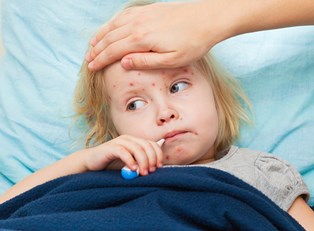Yellow fever is a virus spread by a certain kind of mosquito in Africa and South America. Although it is extremely rare in the United States, people from or traveling in those areas should be familiar with the disease in order to get treatment as quickly as possible. According to the Center for Disease Control, the virus is transmitted through three different cycles: the sylvatic or jungle cycle (mosquitoes infect monkeys and occasional humans), the intermediate or savannah cycle ( mosquitoes infect humans or monkeys, resulting in small epidemics in less populated areas), and the urban cycle (when humans bring it back from less populated areas, and mosquitoes pass it to more humans, creating a larger scale epidemic).
Symptoms
It takes three to six days for symptoms to show up after being bitten by an infected mosquito. Symptoms appear in two phases. The first phase, known as “acute,” shows up as a fever, chills, a headache, sore muscles, nausea, vomiting, and a backache. This lasts for three or four days, and 85% percent of people recover.
The other 15% go into a much more dangerous phase of the disease about a day after the original symptoms get better. The fever returns, often at a higher temperature, and multiple systems within the body can suffer dramatically. Patients may appear jaundiced (having a yellow color to the skin, eyes, and nails often due to poor liver function), thus the “yellow” in yellow fever. Those infected may begin hemorrhaging, bleeding from the eyes, nose, and mouth, and may have blood in both vomit and stool. Abdominal pain is present, along with reduced kidney function. Half of the people with these symptoms die within two weeks, but the other half recover fully.
Diagnosis
Despite such an array of signs, yellow fever can be difficult to diagnose. There are several diseases (malaria, viral hepatitis, and leptospirosis, among others) that can be confused with it because of similar symptoms. The antibodies produced by the body to fight the fever can be found with blood tests to provide surety of diagnosis, but unfortunately the disease occurs in a lot of places where people do not have the money or facilities for such testing. After death has already occurred, highly trained laboratory workers can check liver tissue for a diagnosis as well; this can be essential to knowing yellow fever is in the area before an epidemic occurs.
Treatment and Prevention
Vaccination is the only real way to prevent yellow fever. However, trying to prevent mosquito bites may also help in smaller ways. People who are going to areas where they may be infected should certainly visit a doctor for the vaccine at least 10 days before their trip. Those who live in areas where the virus can run rampant should also be vaccinated; the World Health Organization tries to ensure endemic areas have access to it.
There is no treatment for the disease once it is contracted; symptoms can be alleviated, but there is no way to get rid of it before it has run its course. Intravenous fluids can be administered to prevent the dehydration that comes with vomiting and to try to alleviate poor kidney function. The fever and respiratory failure can be likewise dealt with symptomatically. Additional infections may arise from the decreased functioning of the immune system and can be treated with antibiotics. Unfortunately, neither vaccination nor symptomatic treatment are readily available to the poorer areas the disease often strikes.
Risk Factors
Anyone who isn’t vaccinated is at risk for contracting yellow fever in the right area. Anyone who lives in the 44 African and South American countries where the species of mosquitoes that transmit the virus are also subject to developing it. Those with weakened immune systems are also more likely to contract it. Pregnant women and children less than nine months old are recommended against the vaccine, making them the most likely population to get yellow fever.



